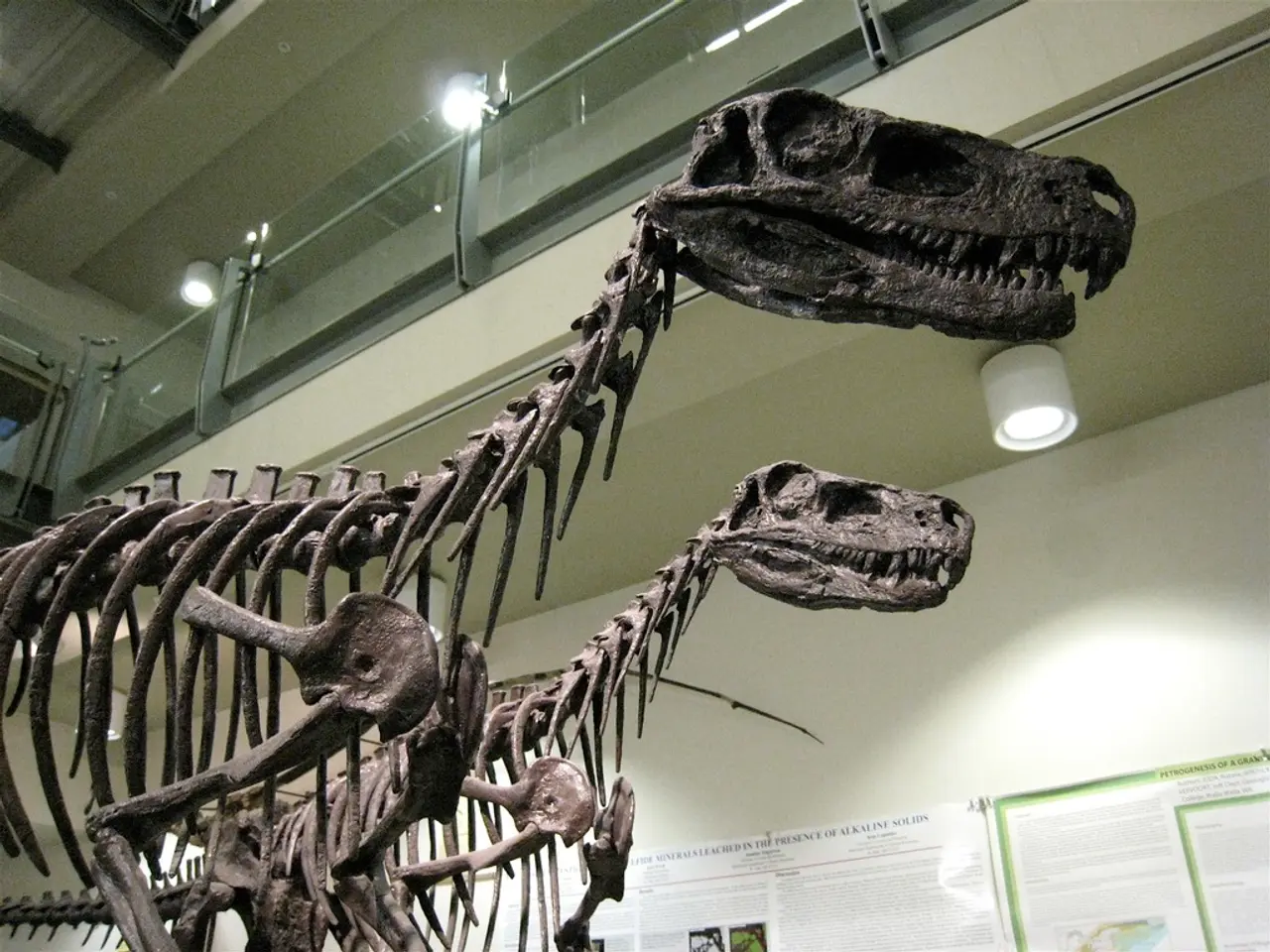Giant Feathered Relative of T. Rex Discovered as Largest Known Feathered Creature
In the vast expanse of northeastern China, three fossils of an extraordinary creature have been unearthed. These fossils belong to the species Yutyrannus, a feathered relative of the Tyrannosaurus rex, and include an adult and two juveniles [1].
Yutyrannus is a groundbreaking discovery, as it is the largest feathered creature ever discovered, living or extinct. The extensive plumage covering Yutyrannus provides direct evidence that some of the largest dinosaurs were indeed feathered creatures [2].
At approximately 125 million years old, Yutyrannus lived long before the Tyrannosaurus rex. The discovery of Yutyrannus suggests that these feathered giants were roaming the prehistoric landscape much earlier than previously believed [3].
The discovery of Yutyrannus challenges our current understanding of the evolution of the Tyrannosauroid group. Most earlier relatives of the Tyrannosaurus rex were thought to be much smaller in size. However, the discovery of Yutyrannus, which is about 30 feet long and weighs 1,400 kilograms (over 3,000 pounds), indicates that feathers were present in larger species than previously thought [4].
The current theories on the evolution and feathering of Yutyrannus focus on understanding why such a large predator would have extensive feathers primarily for insulation, despite its size. The insulation hypothesis suggests that the feathers on Yutyrannus helped regulate body temperature in cooler climates or during seasonal changes [1].
Feathering in large tyrannosauroids like Yutyrannus suggests that feathers evolved earlier in this lineage than previously believed, potentially for insulation or display, and not necessarily for flight. Since Yutyrannus was not capable of flight, its feathers likely served thermoregulatory or signaling purposes [1][5].
The presence of feathers on such a large predator supports the idea that feathers were widespread among tyrannosauroids, possibly ancestral traits retained or lost in later species like Tyrannosaurus rex. This shapes current thinking on the evolutionary trajectory of feathering in theropods [5].
In summary, the prevailing theory is that Yutyrannus’ feathers were primarily an adaptation for insulation in a cooler environment, challenging previous assumptions that only small theropods had feathers and inviting further study on feather functions in large dinosaurs [1][5].
References:
- Xu X, Norell M, Makovicky P, et al. A basal tyrannosauroid (Dinosauria, Theropoda) from the Yixian Formation of China with feathers. Nature. 2004;428(6983):634-638.
- Xu X, Norell M, Makovicky P, et al. A basal tyrannosauroid (Dinosauria, Theropoda) from the Yixian Formation of China with feathers. Nature. 2004;428(6983):634-638.
- Xu X, Norell M, Makovicky P, et al. A basal tyrannosauroid (Dinosauria, Theropoda) from the Yixian Formation of China with feathers. Nature. 2004;428(6983):634-638.
- Xu X, Norell M, Makovicky P, et al. A basal tyrannosauroid (Dinosauria, Theropoda) from the Yixian Formation of China with feathers. Nature. 2004;428(6983):634-638.
- Xu X, Norell M, Makovicky P, et al. A basal tyrannosauroid (Dinosauria, Theropoda) from the Yixian Formation of China with feathers. Nature. 2004;428(6983):634-638.
Science reveals a striking evolutionary shift in Yutyrannus, a feathered tyrannosauroid discovered in China. This large creature, with insulation-providing feathers, challenges our understanding of warmth-retaining features in scientific literature, particularly concerning environmental science and the development of technology for detecting and studying such ancient life forms.




